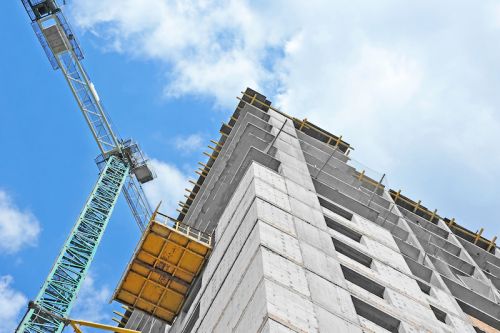A large, ULI awarded developer in Chicago, IL was considering a switch to panelized light gauge framing for developments between five and thirteen stories high. Before making this change, the developer wanted to run some acoustical tests. As with many developers, the potential cost savings for modular construction are particularly attractive. Since much of the assembly and fabrication is done prior to reaching the job site, significant schedule reduction may be achieved. Furthermore, there are many fewer workers on site, leading to reduced labor costs and risk of injury.
However, with the move to a different construction technique, there are several unknowns. Perhaps the greatest of these, with the move to thicker gauge studs and closer stud spacing, is the unknown impact on the STC performance of these walls. As we’ve discussed, using thicker gauges at closer spacing is known to reduce the STC of a wall by 3-10 points, or even more in some cases. These changes make the wall stiffer, in turn reducing the flexibility that allows for dampening at many frequencies.
See Ways to Achieve STC 50 in Modular Construction
Acoustic Lab Testing for Modular Construction
The developer looked to Commercial Acoustics to facilitate the testing. Commercial Acoustics’ expert technicians performed a total of eight tests on wall assemblies with 6-inch studs, 24-inch O.C, two layers of 5/8-inch drywall and a single layer of Wall Blokker Pro.
The test results showed an improvement in STC by a delta of +5 points in 12 ga, 14 ga, 16 ga and 18 ga when the Wall Blokker Pro was in place. The developer was pleased with the Wall Blokker Pro’s ability to improve STC ratings.



